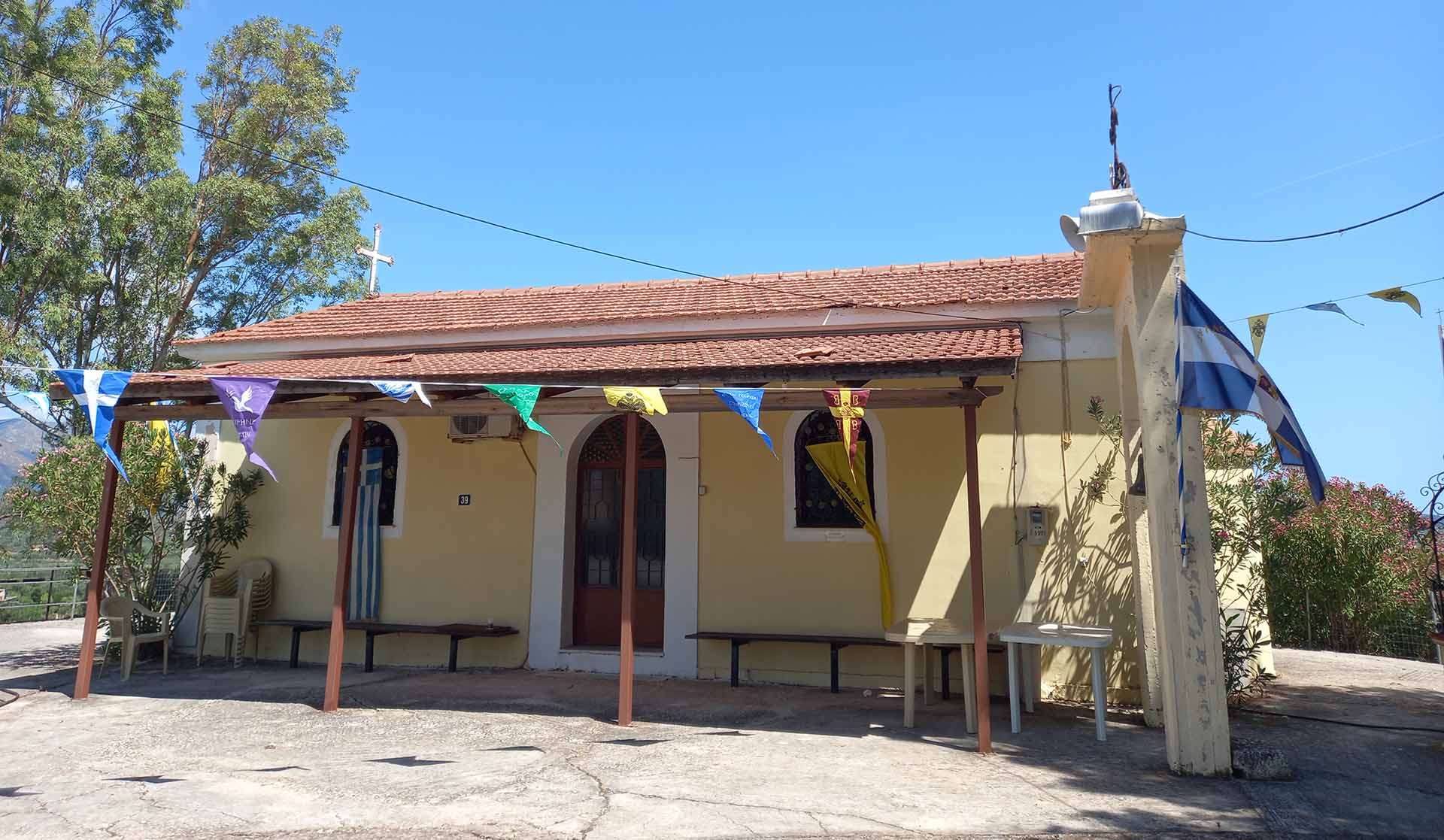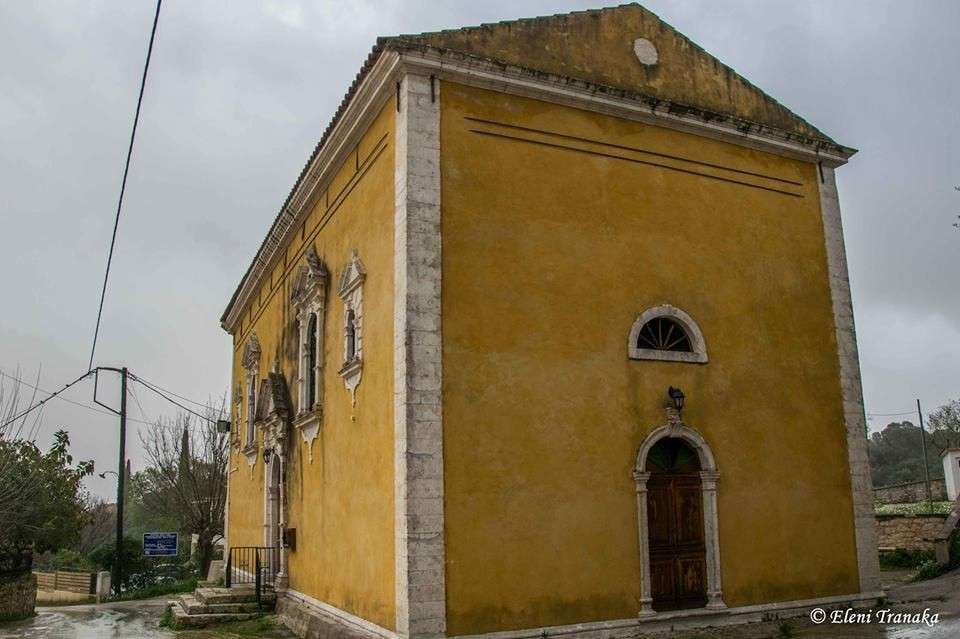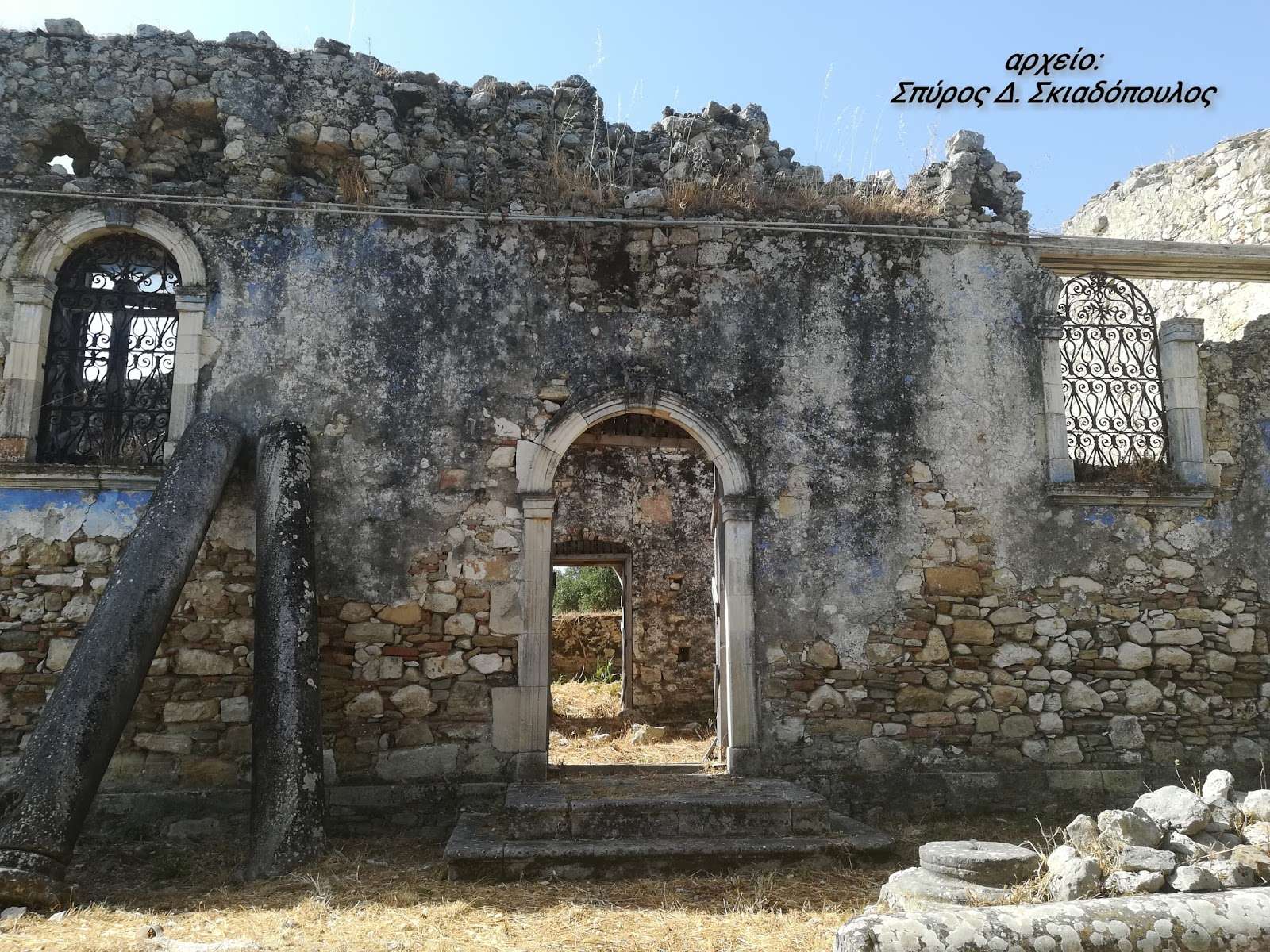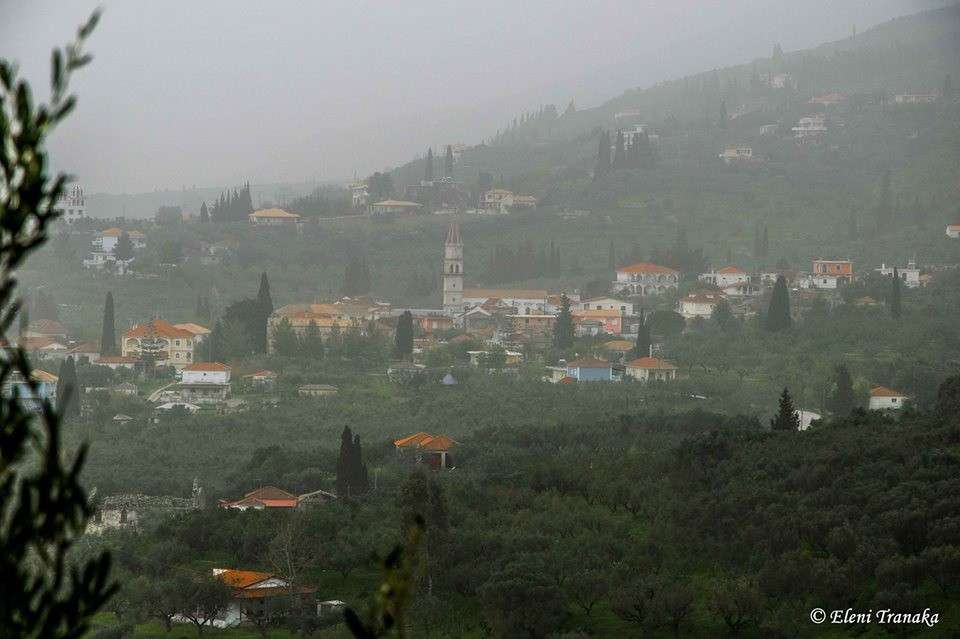
Vougiato
The village of Vougiato or Boygiato owes its name to the Boua (Bua), who were nobles who fought for Venice and were granted estates in the area for their military services. Written references to the village, with this name, exist from the beginning of the 16th century. Today it is a purely agricultural village of Riza with 377 inhabitants.
In Vougiato, one should see: - The Ruins of the Church of Saint John the Theologian. It was originally a Byzantine church, built on the ruins of an ancient pagan temple of Opitaida Artemis. The Byzantine church took various forms over the centuries. Its current ruins belong to a church built at the beginning of the 17th century, in the form of a Basilica. It has been declared a Historical Preservation Monument (Government Gazette 338 / vol. 2 / 1986). – The Ruins of the Temple of Agios Dimitrios. A post-Byzantine church built around 1478, according to the priest-historian Ioannis Kourtsolas (18th century), who speculates as its founder Princess Kleope of the house of "the Tokkon". The church, the ruins of which are preserved today, was built in the style of a single-aisled basilica. At the site of the temple, antiquities from the pagan temple of Opitaïda Artemis were found. Pillars were found that served as supports for the narthex of the church. An ancient marble slab, with a dedicatory inscription to a priestess of Opitaida Artemis, had been placed as a Holy Altar. It has been declared a Historical Preservation Monument (Government Gazette 350 / vol. 2 / 1958). – The Church of Panagia (Assumption of the Virgin). It is unknown when the church was first built. After the earthquakes of 1953, it was rebuilt in the style of a single-aisled Basilica. It is one of the most beautiful churches of Zakynthos and its interior is decorated with works of art that come from the old church and other churches of the village that have been destroyed, such as: hagiographies, a wood-carved gilded iconostasis, a latticed gynaikonite. It looks like a real museum.





